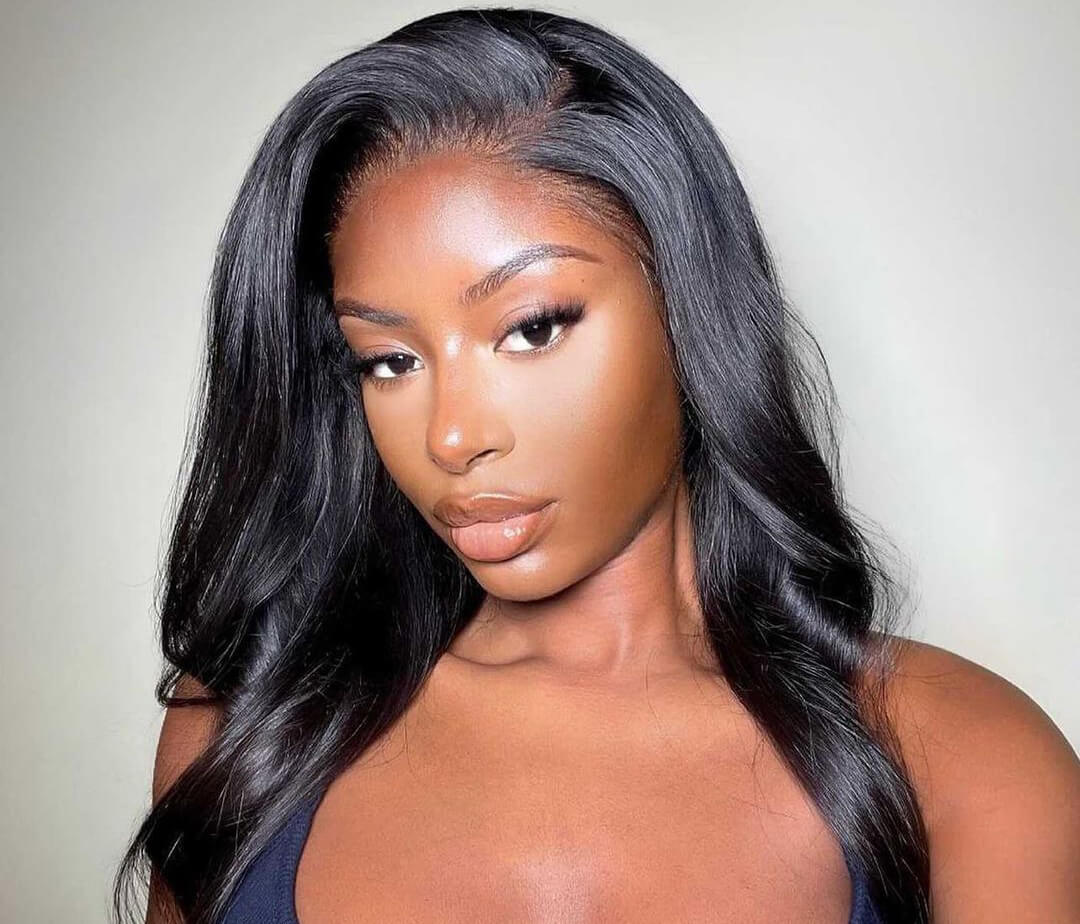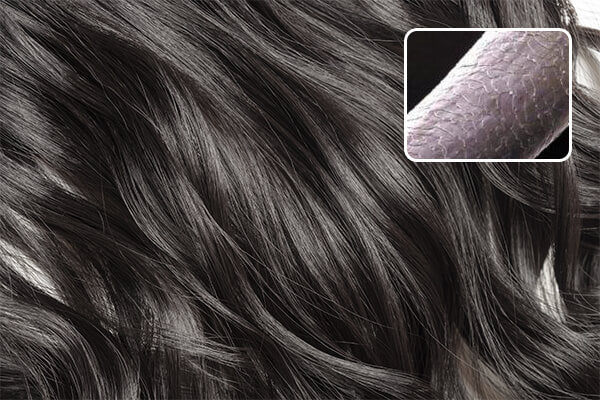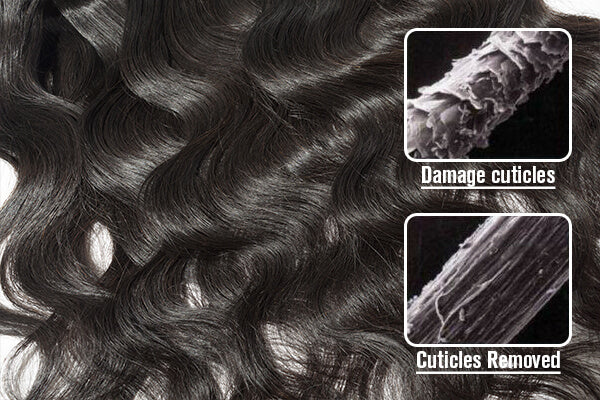Virgin Hair vs Remy Hair vs 100% Human Hair: How to Choose

Virgin hair, Remy hair, and 100% human hair are three of the most common hair choices you have when it comes to human hair wigs. Each of these hair materials has its own unique characteristics, benefits, and drawbacks, making them difficult to sort through. But it’s wise to take the time to understand all of them because the type of hair you choose can affect how natural your wig looks, how long it might last, and much more.
In this article, we’ll compare virgin hair, Remy hair, and 100% human hair (Non-remy hair) to help you make an informed decision about which is best for you. By the end of the article, you may also realize why you’ve had bad experiences with human hair wigs in the past. Let’s get right into it!
Different Types of Human Hair
Human hair is extremely popular in the hair industry right now, and that’s because human hair wigs are the preferred wig type. While synthetic wigs and synthetic blend wigs are still in demand, human hair takes the top spot due to its superior quality. It’s also popular because it can be styled in virtually every way. In most cases, people can heat-style, straighten, and curl their human hair wigs, but that’s rarely possible with other hair types.
Three main things determine human hair quality, and they include the following:
- Where the hair originates from - Most human hair used for wigs comes from Asia. And the most popular hair comes from India, as the hair is soft, supple, and strong.( It’s widely believed that the best quality hair comes from Europe, but European hair hardly can be found on the market today).
- How the hair is collected - There are several ways human hair is collected for wig making. Some manufacturers collect it from temples or other places where people willingly donate it. Others buy the hair from people looking to sell their hair. The worst quality wigs are made from hair that’s been collected from combs, shower drains, and barbershop floors.
- The manufacturing process - The human hair wig manufacturing process may differ from manufacturer to manufacturer. The majority of wig hair goes through some degree of chemical processing to make the hair look and feel smooth and shiny. The hair may also undergo color processing to make it all one color or give it an ombre or balayage look. The more processing the hair goes through, the weaker the hair strands become and the lower the quality will be.
Human hair is classified in three main ways, and these include Virgin hair, Remy hair, and Non-Remy hair. Non-Remy hair is also classified as 100% human hair. In the following sections, we will break down the differentiating qualities of each of these human hair classifications. Soon, you’ll be able to easily tell the difference between all of these human hair types.
Virgin Hair

Virgin hair is natural human hair that has never been altered. It has not been colored, and the cuticles haven’t been stripped - it hasn’t been processed in any way. It’s been harvested from a single donor who did not process their hair. Usually, all hair vendors need to do with virgin hair is clean it, weft it, and resell it.
Virgin hair is the most sought-after hair type of all. It is of high quality and lasts for a long time, being that it’s just like the hair that grows from your head. It’s the best hair type that you can get and also the hardest to find.
Virgin hair can last for several years with careful handling. Throughout that time, you can color it and chemically process it (in moderation) to complement your style.
Remy Hair

Remy hair is human hair that has unstripped cuticles (they are intact), and strands that go in one direction; this makes for easy detangling and lots of body. The hair comes from human ponytails or may be shaved from the scalp.
The main thing to know about this hair is that it may be chemically treated (dyed or texturized) to achieve a new color or hair texture. That body wave or jerry curl Remy hair that you bought was processed to look that way. This type of hair may also go though a process that changes the direction of the hair cuticles so they all go in one direction. It keeps all the hair cuticles intact without the use of chemicals.
Remy hair typically lasts from six months to a year with proper care. You can color Remy hair in most cases, but bleaching it lighter than a color 27 is not recommended. Doing so will likely ruin the hair.
Non-Remy Hair

Non-Remy hair is human hair harvested from multiple heads. It is sometimes collected in piles. Since the hairs are not collected all from one head, the cuticles do not all face the same direction. It would be too time-consuming to manually flip all the hair strands the same way. So, to minimize tangling and frizzing, manufacturers of non-Remy hair use a special process to remove all the cuticles. This process is very hard on the hair and makes it more fragile, shortening its lifespan.
Whenever a human hair wig is described as 100% human hair, without claiming it is Remy or Virgin, then it is non-Remy hair.
Non-Remy hair usually lasts around 6 months. It does not react well to additional processing because it has already been heavily processed in the hair factory.
Virgin Hair vs. Remy Hair
Now, to make the differences between virgin hair and Remy hair apparent, here’s a direct comparison of the two:
- Processing - Virgin hair is completely unprocessed, while Remy hair may have gone through chemical processing to achieve its look, texture, and feel.
- Cost - Virgin hair is much more expensive than Remy hair because it is undamaged and healthy. And vendors take that fact into consideration when setting virgin hair prices. Remy hair, on the other hand, is much more affordable because it has been altered to take on various colors and textures (which damages the hair).
- Longevity - Virgin hair can last for years because it is minimally processed. Whereas Remy hair has a much shorter lifespan because of the color and texture processing it goes through in some cases.
Remy Hair vs. Non-Remy Hair
Here are some of the most glaring differences between Remy hair and Non-Remy hair:
- Processing - Remy hair goes through much less processing than Non-Remy hair. And that’s because Remy hair is collected with all the cuticles in the same direction. So, there’s no need to remove its cuticles to make it easier to detangle. On the other hand, since non-Remy hair is collected randomly, hair manufacturers need to make the hair smoother and less prone to tangling. They do that by removing the cuticles entirely and then coating them in silicone. The problem with this is that the effects of the silicone only last for 4 to 6 weeks – after that, the hair will tangle and get matted, and the shine will go away.
- Cost - Remy hair is more expensive than non-Remy hair because it’s much higher quality than non-Remy hair. The extensive processing that non-Remy hair goes through damages the hair permanently. This is also factored into the price.
- Longevity - Remy hair lasts longer than non-Remy hair. Non-Remy hair is much more prone to tangling, brittleness, and breakage due to the chemical processing it requires.
How to Tell The Difference Between Virgin Hair, Remy Hair, and Non-Remy Hair
As you now know, virgin hair is the best hair choice in terms of quality. Then comes Remy hair, and in last place is non-Remy hair. But how do you tell them all apart? This section will help you with that.
- Virgin hair qualities: Virgin hair has a natural-looking color that’s never jet black. It’s more of a natural black or brown. There may be a gray hair or two in the mix. Virgin hair is also thicker than non-Remy hair, but this might not be obvious to the naked eye. Virgin hair will also be soft and smooth to the touch and feel 100% natural. After all, it is the most natural that human hair can get.
- Remy hair qualities: Remy hair looks perfectly smooth and shiny. But a telltale sign that it is not virgin hair is that it may be available in jet black shades and other dyed colors. Otherwise, the hair will still look full and luxurious, from roots to tips.
- Non-Remy hair qualities: Non-Remy hair may not be all one length - you’ll see short hairs falling downward if you hold the very ends and flip the hair upside down. It may also look a bit thin in general and frayed near the ends when you buy it, and it’ll only become more damaged after that. When you style it, you’ll notice that it sheds and breaks easily. And when you try to wash it, it will get very tangled.
How to Choose Between the Three
Choosing between Virgin, Remy, and Non-Remy hair can be difficult if you don’t know what factors to consider. That’s why we’d like to clearly address this topic in this section.
Here are the main things to consider when choosing a hair type:
- Quality: Virgin > Remy > Non-Remy - Virgin hair is #1 when it comes to hair quality. Then comes Remy hair, and then non-Remy hair. So, if you are looking for the best quality hair that’ll give you ultimate styling versatility and natural appeal, go with virgin hair.
- Price: Virgin > Remy > Non-Remy - Though virgin hair is the most expensive hair on the market, it gives you the most value for your money. It lasts so long that you won’t need to buy new hair for a long time. Next up is Remy hair, which won’t last as long as virgin hair but will last much longer than non-Remy hair. And while non-Remy is the most affordable hair type on the market, it has such a short lifespan that you’ll likely need to buy more several times throughout the year.
- Styling: Virgin > Remy > Non-Remy - If you want to be able to style your hair freely as if it were your own hair, then you need virgin hair. You can dye it platinum blonde, curl it whenever you want, or even perm or relax it. Your options are a bit limited with Remy hair - you can color it and bleach it (to a medium blonde), but other forms of chemical processing are not recommended. Non-Remy hair is the most restrictive with regards to styling. It doesn’t do well with dyeing, bleaching, or even heat-styling in some cases.
- Lifespan: Virgin > Remy > Non-Remy - Virgin hair has the longest lifespan (1 - 10 years), Remy hair lasts up to a year or a little longer, and Non-Remy hair lasts around 6 months.
- Fullness: Hair fullness is determined by hair density (how many strands there are) and the thickness of individual strands. Virgin hair and Remy hair strands are thicker than processed non-Remy human hair. So, virgin and Remy hair will look thicker than non-Remy hair of the same density.
Clearly, virgin hair and Remy hair are better than non-Remy hair. However, that doesn’t mean that non-Remy hair is worthless. Non-Remy wigs come in many different styles, look natural, and are affordable on just about any budget. On top of that, there are many good non-Remy hair wigs out there.
What is Your Choice
We hope that this guide helps you make informed decisions about hair types when you shop wigs. Knowing the ins and outs of each hair type will help you understand that you get what you pay for. If you want top-quality hair, invest in virgin hair. And for the best of the best virgin hair, we encourage you to shop our extensive virgin hair wig collection - you won’t find better virgin hair anywhere.





I would choose non-Remy because I “do” want the shine to disappear….the #1 complaint with wigs is that they “all” look fake because of the shine. Real hair still growing on the head us not extremely shiny. The shinier the wig, the more fake it looks.
Olá BARBARA, Obrigado por visitar nosso site. Entre em contato conosco em service@xrsbeatuyhair.com. Nossa equipe de serviço irá ajudá-lo a obter o seu pedido. Tenha um bom dia!
Sou do Brasil. Moro em São Paulo como faço pra compra um pra mim
Leave a comment